(The original Burmese version was published on the ISP-Myanmar Facebook page on March 26, 2021.)
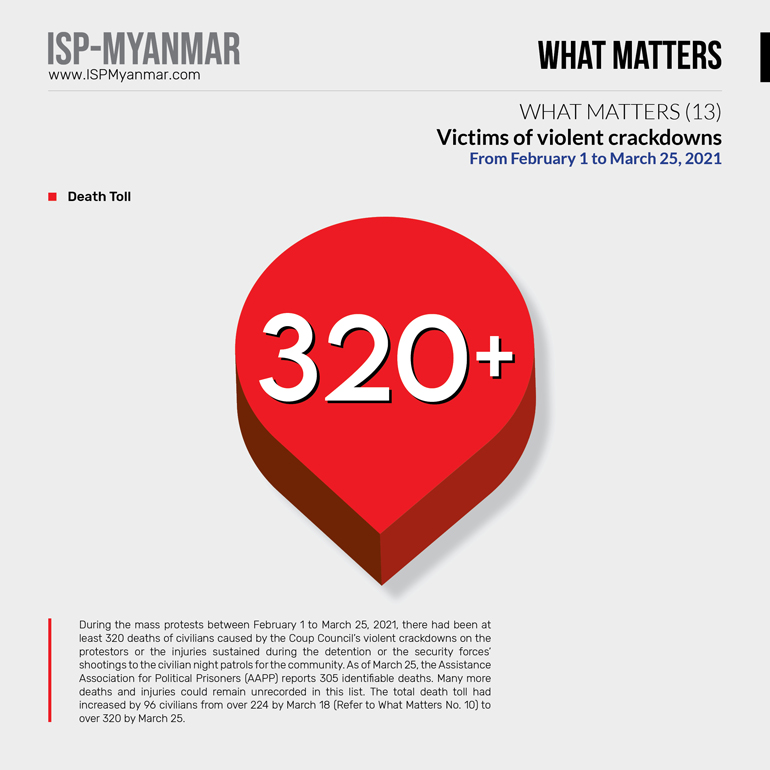
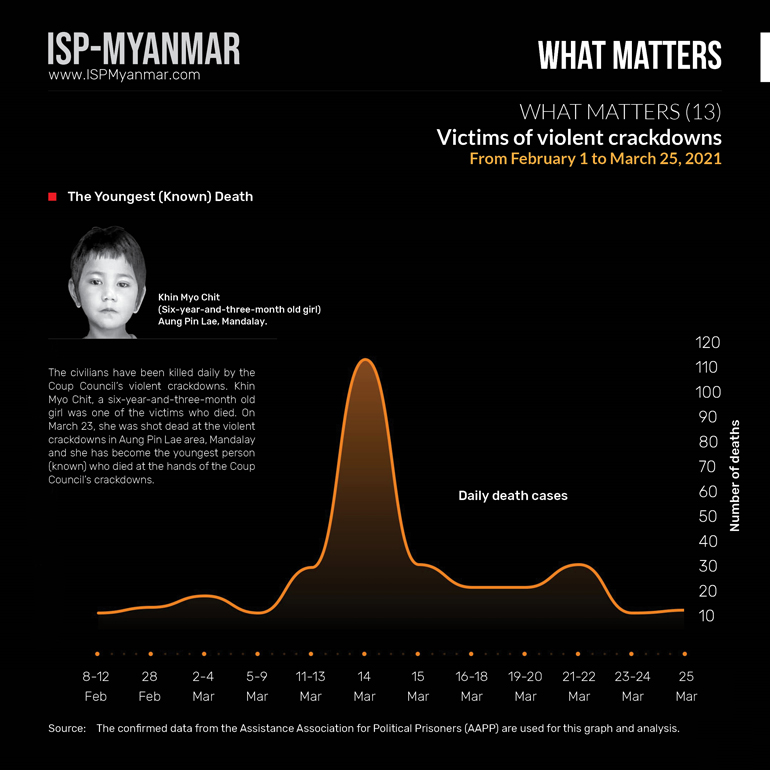
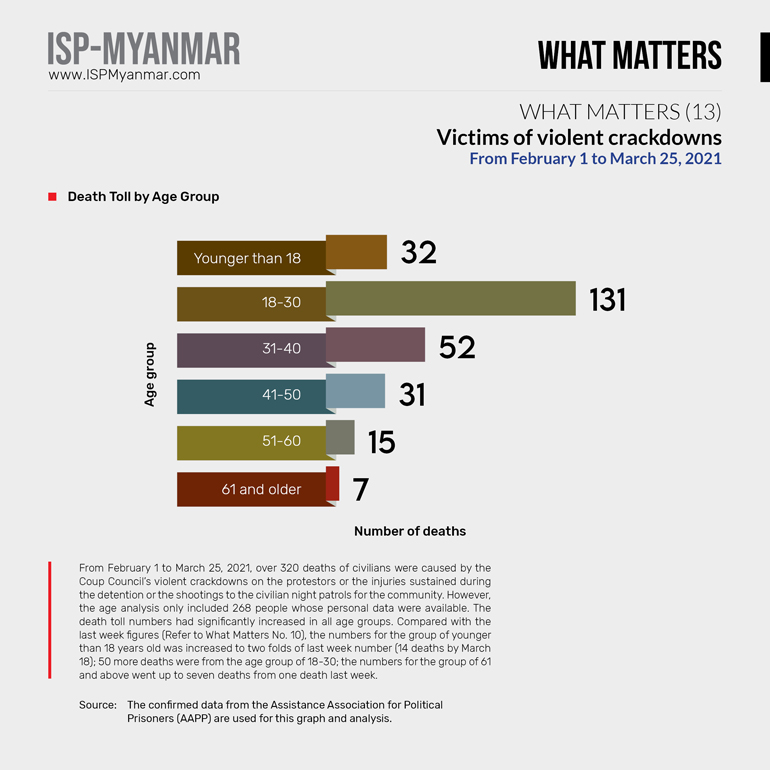
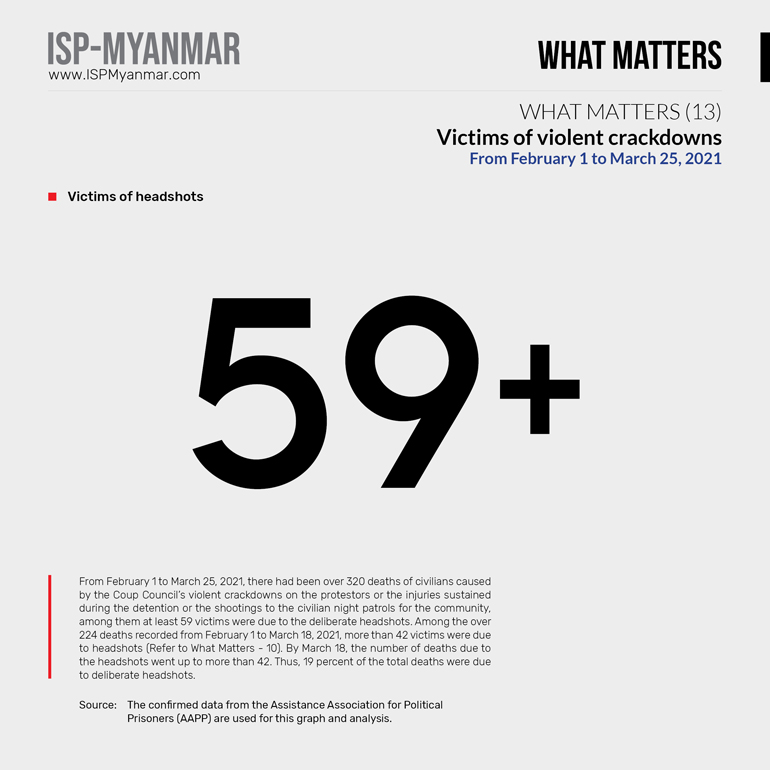
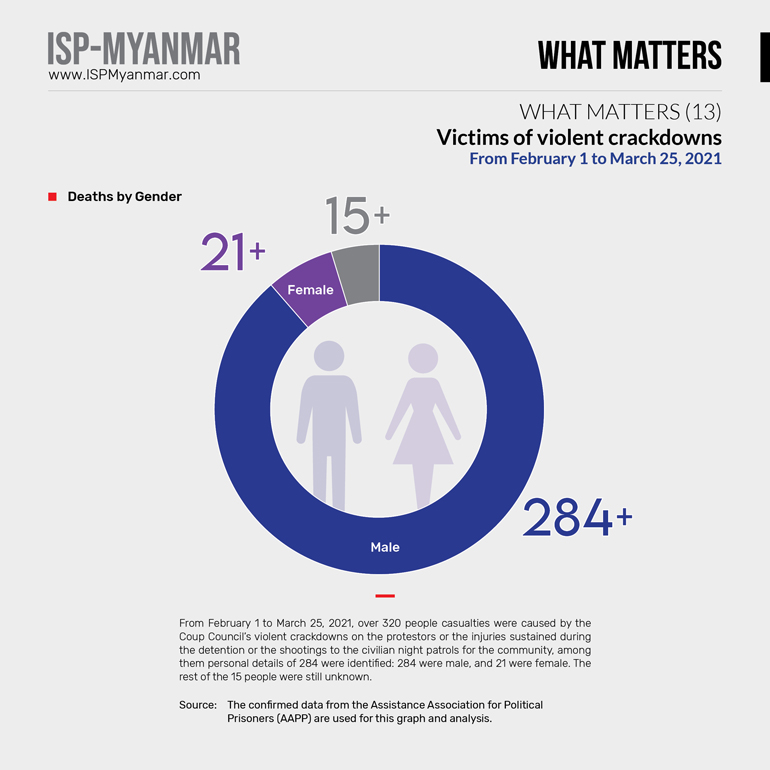
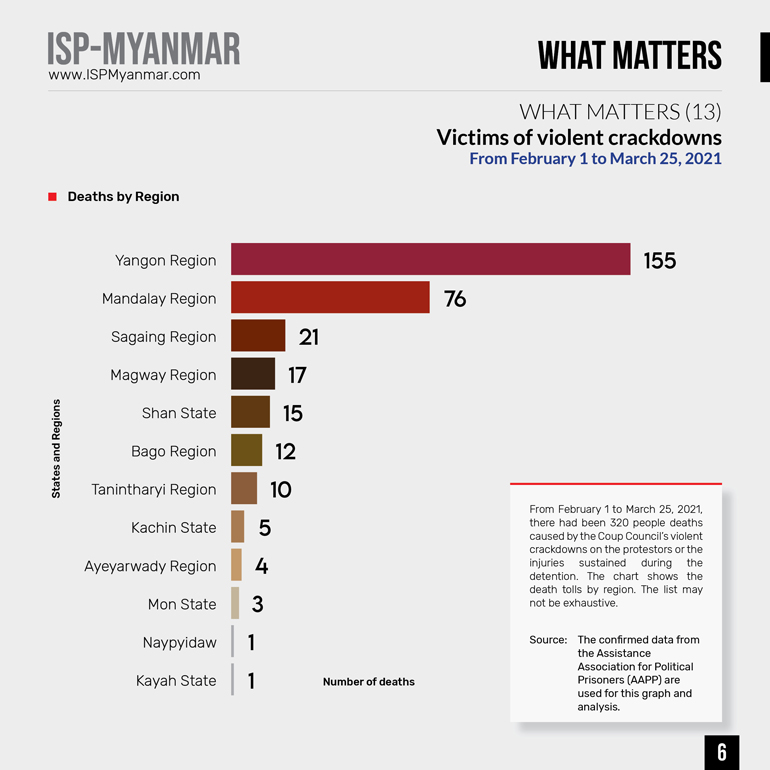
∎ Key findings in brief
Followed by the February 1, 2021 military coup d’état, there have been widespread anti-coup mass movements across Myanmar. According to the collected data, as of March 25, the numbers of protester casualties because of the violent crackdowns and injuries inflicted during the inhumane torture in custody, the number of people who died in action have reached over 320. Likewise, there were numerous protesters wounded during the protests and human rights and human dignity violation committed by the coup council’s security forces have been widespread. As of March 25, the Assistance Association for Political Prisoners (AAPP), have collected personal data of the 305 protesters who died in the mass protests. There could be many more that have not yet been collected.
Compared to the data described in the last week What Matters No. 10 (Burmese version published on March 26, 2021), the number of casualties has increased more than 96 within this week. Regarding the age group of the victims, protesters under 18 years old age group and the age group of 18-30 years old have yet at the top of the list. The death toll of protesters of the age group 31-40 has also kept increasing. Moreover, the number of casualties due to sniper headshots have also increased. The number of headshot victims increased from the last week 42 to 59 by the end of this week, which made up 19 percent of the total casualties.
By region, the highest death toll was still in Yangon Region and that of Mandalay Region followed at the second position. Among the additional 96 deaths within this week, Ma Khin Myo Chit, a six years and three months old child, was one of the victims. She was shot death during the violent crackdown of the security forces at Aung Pin Lae Ward in Mandalay on March 23. She has become the youngest victim of the cruel crackdowns of the military junta since the February 1 military coup.
The coup council stated the casualties of the security forces at the press conference that was held on March 23, 2021. According to the statics of the coup council’s press conference team, there were 45 deaths in total, including nine security personnel and one of their family members, as well as 33 males and two females, who were accused as the treacherous informants of the junta’s security forces. However, the death tolls were only the claim of the junta’s propaganda team but without any confirmation of independent media news outlets and organizations.
∎ Why does it matter?
By looking at the extend of the violent crackdowns and examining the corps and body parts of the victims who died during protests and those who were killed in the targeted shootings, it can be determined whether the security forces complied with the internationally agreed standard rules and regulations to be followed when dealing with mass protests. These are important data that can be explored from a human rights approach as well as from a transitional justice perspective.
∎ Other relevant readings:
AAPP has collected detailed data about the anti-coup protestors who were victimized during the violent crackdowns. Since the February 1 military coup, AAPP’s database has kept recording the numbers and causes of the death of protesters, the ways the security forces used in responding to the anti-coup d’état mass protests, and evidence of human rights and human dignity violations by the security forces. Daily logs of AAPP are also available on the organization’s website and Facebook pages. Information can also be sent to AAPP for those who are not yet on the list.
◉ What Matters ISP-Myanmar covers a section entitled “What Matters” that could benefit the current anti-coup mass movements through a series of research work. This section aims to introduce issues and data that should be addressed in a short, easy-to-read manner and accessible to everyone based on research findings. The introduced facts, cases, and data are intended to be a thought-provoking stimulus, but not as a definite view. The purpose is to make the data presented more accurate and complete. In this series, ISP would try to answer three questions in general: 1) what is the issue of concern? 2) why does it matter? 3) is it relevant for Myanmar? Addressing these questions does not involve an exhaustive examination but covers the relevant elements and claims. Thus, each issue of “What Matters” provides a list of suggested readings and references for further study. In the current situation, this section will focus on research findings related to three research topics. These are: 1) research findings related to coup d’état 2) research findings on mass movements 3) research findings on how the international community (especially powerful foreign countries that can provide significant support ) intervened in military coups and the authoritarian states. The research will be based on comparative studies. Research data collected by local partner organizations will also be requested and respectfully presented in various forms from time to time.
